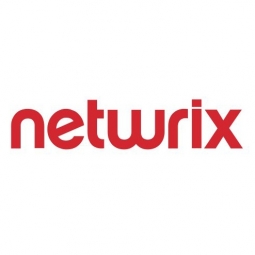Applicable Industries
- Finance & Insurance
- National Security & Defense
Use Cases
- Tamper Detection
About The Customer
First National Bank Minnesota (FNB MN) was founded in 2005 as a result of the merger of the Security State Bank of Mankato and the First National Bank of St. Peter, which dates back to 1857. FNB MN has offices in St. Peter, Mankato, and Gaylord, Minnesota, U.S. It offers a wide variety of personal banking products and services, business banking solutions, and investment services. The bank is committed to providing the highest level of service to its customers and is constantly looking for ways to improve its operations and security.
The Challenge
First National Bank Minnesota (FNB MN) faced a significant challenge in rebuilding its Active Directory to reduce its complexity and improve security. The bank needed to secure the sensitive financial data of its customers, such as income verification, Social Security numbers, and employment history. This was crucial to mitigate the risk of data breaches. The challenge was further compounded by the fact that the bank had recently merged with another bank, adding to the complexity of the Active Directory. The bank was looking for a solution that could help it clean up its Active Directory and secure its sensitive data efficiently and effectively.
The Solution
FNB MN opted for Netwrix due to its rich feature-set and ease of use. The solution allowed the bank to discover, classify, and secure sensitive data. It ensured that customer data was located only in secured locations and that only authorized users could access it. The bank could now understand what kind of data it stored and where; what information needed to be encrypted, relocated, or erased; and whether access to it was granted on a need-to-know basis. Netwrix also enabled the bank to detect suspicious activity faster through daily activity summaries and alerts on the most critical actions. This feature was instrumental in providing early warnings of ransomware or insider misuse. Furthermore, Netwrix helped the bank rebuild its Active Directory with less effort. Reports on the state of GPOs and the membership of security groups enabled the bank to slash the time required to clean up Active Directory.
Operational Impact
Quantitative Benefit

Case Study missing?
Start adding your own!
Register with your work email and create a new case study profile for your business.
Related Case Studies.

Case Study
Real-time In-vehicle Monitoring
The telematic solution provides this vital premium-adjusting information. The solution also helps detect and deter vehicle or trailer theft – as soon as a theft occurs, monitoring personnel can alert the appropriate authorities, providing an exact location.“With more and more insurance companies and major fleet operators interested in monitoring driver behaviour on the grounds of road safety, efficient logistics and costs, the market for this type of device and associated e-business services is growing rapidly within Italy and the rest of Europe,” says Franco.“The insurance companies are especially interested in the pay-per-use and pay-as-you-drive applications while other organisations employ the technology for road user charging.”“One million vehicles in Italy currently carry such devices and forecasts indicate that the European market will increase tenfold by 2014.However, for our technology to work effectively, we needed a highly reliable wireless data network to carry the information between the vehicles and monitoring stations.”

Case Study
Safety First with Folksam
The competitiveness of the car insurance market is driving UBI growth as a means for insurance companies to differentiate their customer propositions as well as improving operational efficiency. An insurance model - usage-based insurance ("UBI") - offers possibilities for insurers to do more efficient market segmentation and accurate risk assessment and pricing. Insurers require an IoT solution for the purpose of data collection and performance analysis

Case Study
Data Capture for Afghanistan Forces
Electronic equipments on the field of Afghanistan provided information on the status of the vehicle and to identify potential threats surrounding it to the British Force. The monitoring and interpretation of this data requires robust and sophisticated digitization for data capture and communication.

Case Study
Smooth Transition to Energy Savings
The building was equipped with four end-of-life Trane water cooled chillers, located in the basement. Johnson Controls installed four York water cooled centrifugal chillers with unit mounted variable speed drives and a total installed cooling capacity of 6,8 MW. Each chiller has a capacity of 1,6 MW (variable to 1.9MW depending upon condenser water temperatures). Johnson Controls needed to design the equipment in such way that it would fit the dimensional constraints of the existing plant area and plant access route but also the specific performance requirements of the client. Morgan Stanley required the chiller plant to match the building load profile, turn down to match the low load requirement when needed and provide an improvement in the Energy Efficiency Ratio across the entire operating range. Other requirements were a reduction in the chiller noise level to improve the working environment in the plant room and a wide operating envelope coupled with intelligent controls to allow possible variation in both flow rate and temperature. The latter was needed to leverage increased capacity from a reduced number of machines during the different installation phases and allow future enhancement to a variable primary flow system.

Case Study
Automated Pallet Labeling Solution for SPR Packaging
SPR Packaging, an American supplier of packaging solutions, was in search of an automated pallet labeling solution that could meet their immediate and future needs. They aimed to equip their lines with automatic printer applicators, but also required a solution that could interface with their accounting software. The challenge was to find a system that could read a 2D code on pallets at the stretch wrapper, track the pallet, and flag any pallets with unread barcodes for inspection. The pallets could be single or double stacked, and the system needed to be able to differentiate between the two. SPR Packaging sought a system integrator with extensive experience in advanced printing and tracking solutions to provide a complete traceability system.

Case Study
Transforming insurance pricing while improving driver safety
The Internet of Things (IoT) is revolutionizing the car insurance industry on a scale not seen since the introduction of the car itself. For decades, premiums have been calculated using proxy-based risk assessment models and historical data. Today, a growing number of innovative companies such as Quebec-based Industrielle Alliance are moving to usage-based insurance (UBI) models, driven by the advancement of telematics technologies and smart tracking devices.







